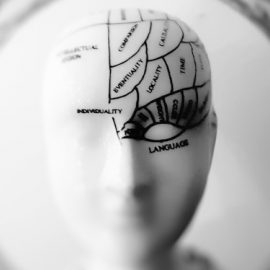

This article is an excerpt from the Shortform book guide to "Biased" by Jennifer L. Eberhardt. Shortform has the world's best summaries and analyses of books you should be reading.
Like this article? Sign up for a free trial here .
What is the other-race effect? How does this phenomenon develop? Is there a way to prevent/fight it?
In her book Biased, Dr. Jennifer Eberhardt discusses the “other-race effect.” The other-race effect occurs when an infant is raised without exposure to other races and thus has difficulty recognizing faces of other races throughout their life. This effect can be mitigated later in life through positive, interpersonal relationships with those of another race.
Here is everything you need to know about the other-race effect.
The Other-Race Effect
Have you ever heard someone say, “They all look alike” about people of another race? Those types of comments can be deeply offensive. (For example: In 2018, Hillary Clinton came under fire for saying, “I know, they all look alike” after a reporter mixed up Senator Cory Booker and former attorney general Eric Holder, both of whom are black men.)
However, that sentiment doesn’t typically reflect a conscious prejudice—more often, it’s the natural result of human biology. Scientists like Eberhardt call this biological process the “other-race effect”: It’s the experience of being able to easily recognize faces of your own race but struggling to identify faces of other races.
Eberhardt says that the other-race effect is one of the neurological processes underlying bias because it makes us see people of our own race as individuals worth recognizing and people of other races as just representatives of a group, not individual people.
The effect is universal: If you’ve spent time around groups of people outside your own race, you may have experienced it yourself. It develops because your brain can’t absorb every detail of the sensory environment around you all at once, so it learns to prioritize whatever it sees most often and focus its attention there.
How the Other-Race Effect Develops in Infancy
As early as 1975, scientists had confirmed that infants are naturally drawn to faces more than other stimuli. One study even found that newborns less than one hour old prefer images of typical faces over images of scrambled facial features. However, this overall preference for faces tends to decline by the age of three months, which is around the same age that scientists first see evidence of the other-race effect. This suggests that babies begin life with a generalized preference for human faces, which then gets “tuned” by their environment into a preference for faces of a certain race. By the age of nine months, most infants can only recognize faces of their own race. There are some exceptions to this rule—for example, one study found that Chinese and Vietnamese children who were adopted into white families between the ages of two and 26 months old were equally good at recognizing Asian and Caucasian faces later on. However, another study found that Korean children adopted into white families after the age of three are much better at recognizing Caucasian faces than Asian ones. Scientists think this might mean
Racial Experience Changes the Brain
Eberhardt argues that the fact that your ability to recognize others’ faces depends on your experience with people of other races reveals something important about human brain development—cultural conceptions of race are so powerful, they can change how your brain functions. This is an example of neuroplasticity, which is your brain’s ability to change its structure and function in response to experience.
(Note: Until the mid-twentieth century, scientists thought that neuroplasticity was impossible in adults because the brain was already fully developed; now, scientific research shows that adult brains can still change and grow new connections between neurons. How well your brain maintains the ability to adapt is partly determined by genetics, but your lifestyle is important, too: Research shows that people who exercise regularly, practice mindfulness, and keep learning new things have an easier time forming new neural connections.)
Scientists can track these changes in the brain using brain scans. However, until recently, there was no scientific evidence that facial recognition abilities (the brain process at the core of the other-race effect) could also change in response to experience with people of different races. Eberhardt and a team of neuroscientists set out to study this question using brain scans of the fusiform face area (FFA), where facial recognition happens in the brain.
In a 2001 study, Eberhardt and her team studied changes in the FFA when participants looked at pictures of people from their own race or other races. They tracked these changes using functional magnetic resonance imaging (fMRI), a technology that allows researchers to track blood flow to different parts of a person’s brain while that person does a specific task. (Shortform note: Increased blood flow means the brain is routing more oxygen to that area because it’s working harder than usual (just like you breathe heavier when you sprint than when you lie down). Scientists call that increased blood flow “activation.”)
For both black and white participants, the team found that the FFA activated more when people looked at faces of people the same race as themselves. In other words, when you see a person of your own race, your brain automatically works harder to encode their specific features so that you can recognize them later. If you grew up surrounded by white faces, your brain prioritizes recognizing white faces; if you grew up surrounded by black faces, your brain prioritizes recognizing black faces. The conclusion: Parts of the brain actually change how they function depending on a person’s experience with race.
Positive Interracial Experiences Reduce the Other-Race Effect
Eberhardt’s team was the first to find evidence that a person’s experience with people of other races can change how their brain functions. Since then, other scientists have found similar results, even in other areas of the brain. In 2020, a group of researchers studied activation in a broader group of brain structures related to facial recognition in white participants while they looked at images of black and white faces. They found that the more positive interpersonal experiences a white person had with black people, the more the facial recognition areas of their brain lit up when they looked at black faces. In other words, having positive, high-quality contact with people of another race mitigates the other-race effect, making it easier to recognize individual faces of people of that race.

———End of Preview———
Like what you just read? Read the rest of the world's best book summary and analysis of Jennifer L. Eberhardt's "Biased" at Shortform .
Here's what you'll find in our full Biased summary :
- How implicit bias forms in the brain
- Whether or not bias training actually works
- Why there has been a sudden resurgence in white nationalism






